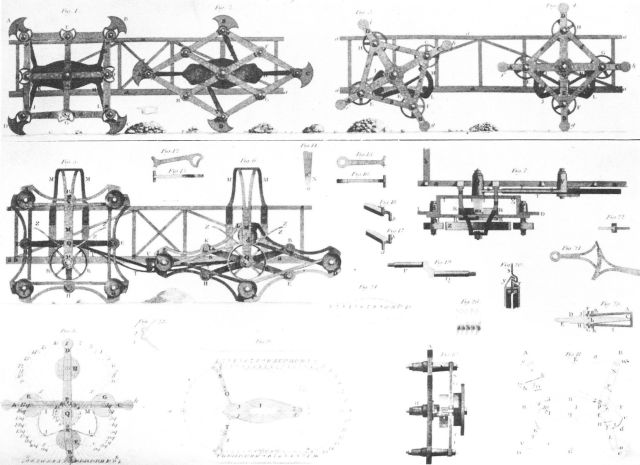
In 1824, Gompertz became a founding member of the Society for the Prevention of Cruelty to Animals (SPCA) which later became the RSPCA. He acted for many years as the president of the society prior to resigning for reasons that may have been connected to his radical views or to his Judaism. He went on to found the Animals' Friends Society.
Gompertz was a vegan and refused to ride in horse-drawn carriages.
Inspired by his desire to minimize animal suffering Gompertz invented a hand-crank drive in 1821, which he applied to the bicycle design of Baron von Drais. He also invented the expanding chuck, and , of most interest to us, in 1814 he designed ‘scapers’, which were substitutes for wheels, keeping the carriage at the same height off the road, reducing friction.
Source: Locomotives and Cars Vol 4.
A novel machine was a few days ago exhibited in the Kensington and Clapham roads. It consisted of a sort of carriage-wheel which carries a railroad for itself, upon which the carriage travels with great facility and quickness. – It was composed of a jointed square instead of a circle, and has four rollers, not touching the road, and four feet which alternately come to the ground, producing a kind of walking and escaping obstacles. We understand it is the invention of Lewis Gompertz, Esq. Should these machines be adopted, probably common Railroads may be partially or wholly dispensed with.
Gompertz, L. , "Sundry Improvements in Carriages (and Substitutes for Wheel Carriages) and Other Machines", 1814 British Patent #3,804
Gompertz' idea was later improved by Diplock's "Pedrail" of 1900.
See other Walking Wheels at the bottom of the Walking Machines page.